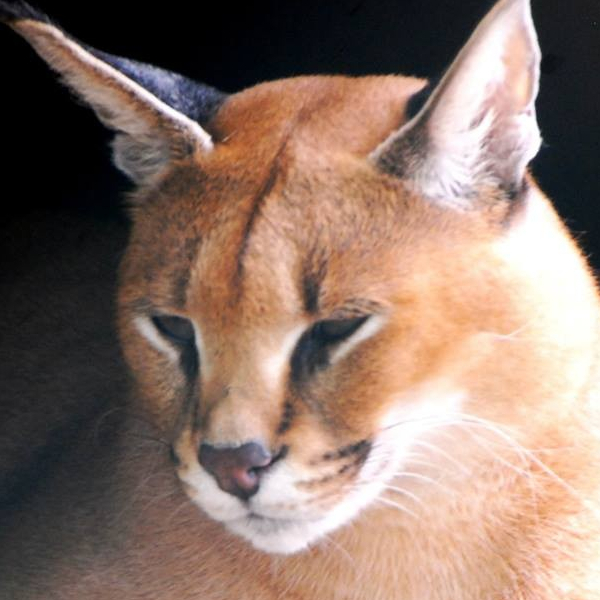I cannot imagine how difficult and rewarding the work doing this must be. I wish I was a good enough programmer to get involved.
I feel like I’m a decent programmer but stuff like this just feels like magic to me. Huge respect to the people who work on this kind of stuff.
Betcha the docs suck and you can make them better.
Actually they’ve been cleaned a bit recently. More hands the better though
Asahi Linux folks, impressive again
Maybe someday it’ll be “You want to game on Apple hardware? Use Linux”.
Well, it is already like that for x86 Macs. Once Asahi gets a solid Vulkan driver, this could also extend to the ARM Macs. Linux has been far more viable for gaming that MacOS for a while now. The lack of Vulkan and 32bit support in modern MacOS has been crippling for Wine/Proton, though it’s gotten better thanks to Wine 9.0 and MoltenVK.
As soon as they can make multiple displays work over a single USB-C I may be able to ditch the double dongle nightmare I have right now
I think that that is a hardware limitation, not a software one
It’s not. It’s 100% a MacOS limitation, because you can use MST on Windows to drive multiple displays on Mac hardware, the same is likely possible with Asahi Linux if they want to support it. Apple doesn’t want to use MST because they want you to buy into their Thunderbolt displays for extra monitors, or you can just use DisplayLink if you’re desperate like me.
It is hardware limitation. Those M-series chips have just a few display controllers. Even with Thunderbolt you can’t exceed that limit.
It’s an arbitrary one. Most Windows and even Linux laptops can display to multiple monitors without extensive display controllers. For example, my two HDMI USB-C hub can be driven by a Windows or Linux laptop and independently display two monitors, MacOS mirrors them. On my M2 Max MBP if I connect one USB-C hub to one monitor and another USB-C hub in another USB-C port to another monitor, they work. No DisplayLink.
Yeah that thing is artificial limitation. Asahi folks might get MST support working, but I’m not familiar with the chip so it might not be. I was thinking about total display limit. Also Thunderbolt dock can be had for not a lot if you search enough. I got mine at a reasonable price.
I use a DisplayLink dock at home because it works, it’s just kinda annoying that I have to hack multi-display on an expensive laptop. When I go to the office I just deal with double-docking, it’s still a better display situation than when I was running Ubuntu and GNOME.
Now we just need Apple M* hardware that can be bought like a regular laptop or PC parts, but that’s never happening sadly.
I wonder what in the Arm world compares GPU-wise with what Apple is doing…
Nvidia has Arm drivers for their GPUs, not sure about AMD. It should be possible to build an Arm laptop with a dedicated GPU.
Edit: BTW there are already Arm PCs you can buy which have PCIe, and can use (at least Nvidia) desktop GPUs.
Nvidia and Linux tho? Not too hopeful about driver quality lol
I think the situation is different for their mobile hardware. IIRC the Nintendo Switch’s Nvidia Tegra chip had an official Mesa driver, which made it really easy for modders to get Linux and Android working on the machine.
Wait really? I can build an ATX Arm system? I’m a SBC whore but I never even considered a full desktop build…
You can even get RISC-V ITX boards now.
Justin
Thermal Fan 4x 8056mm
Damn, four eight-meter fans!
metal
This is the best summary I could come up with:
The team has been steadily improving its open source, standards-conformant GPU driver for the M1 and M2 since releasing them in December 2022, and today, the team crossed an important symbolic milestone: The Asahi driver’s support for the OpenGL and OpenGL ES graphics have officially passed what Apple offers in macOS.
Developer Alyssa Rosenzweig wrote a detailed blog post that announced the new driver, which had to pass “over 100,000 tests” to be deemed officially conformant.
The team achieved this milestone despite the fact that Apple’s GPUs don’t support some features that would have made implementing these APIs more straightforward.
Rosenzweig’s blog post didn’t give any specific updates on Vulkan except to say that the team was “well on the road” to supporting it.
Though there are still things that don’t work, Fedora Asahi Remix is surprisingly polished and supports a lot of the hardware available in most M1 and M2 Macs—including the webcam, speakers, Wi-Fi and Bluetooth, and graphics acceleration.
Other features, like Thunderbolt, running displays over USB-C, the system’s built-in microphone, and the Touch ID fingerprint sensors, remain non-functional.
The original article contains 656 words, the summary contains 181 words. Saved 72%. I’m a bot and I’m open source!
I love you
Happy running Linux on my SP8 but this actually makes M1/2 Apple hardware appealing
I thought Apple didn’t support OpenGL at all.
Damn…
Apple is a great company but this makes it a little better. The problem is that the hardware is extremely expensive and need a bunch of proprietary blobs not to mention custom Apple exclusive parts.









